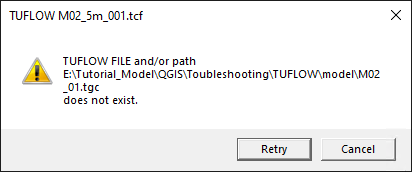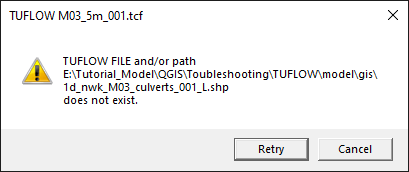Tutorial Troubleshooting QGIS: Difference between revisions
| Line 111: | Line 111: | ||
[[File:Animation Troubleshooting CommonErrors 08a.gif]]<br> |
[[File:Animation Troubleshooting CommonErrors 08a.gif]]<br> |
||
<br> |
<br> |
||
<li>If no error messages appear in the .tlf and the last line shows 'Sending initialisation data to HPC...' see <u>[[Tutorial_Troubleshooting_QGIS#HPC_TUFLOW_Log_File_.28.2Ahpc.tlf.29 | HPC TUFLOW Log File]]</u> below. |
<li>If no error messages appear in the .tlf and the last line shows 'Sending initialisation data to HPC...' see <u>[[Tutorial_Troubleshooting_QGIS#HPC_TUFLOW_Log_File_.28.2Ahpc.tlf.29 | HPC TUFLOW Log File]]</u> below.<br> |
||
| ⚫ | |||
<br> |
<br> |
||
| ⚫ | |||
=== HPC TUFLOW Log File (*.hpc.tlf) === |
=== HPC TUFLOW Log File (*.hpc.tlf) === |
||
Revision as of 10:20, 13 May 2022
Introduction
This troubleshooting page contains common errors and steps to follow when investigating models.
Common Errors
Unsaved Control Files
When changes are made in the control files and the files are not saved, errors occur.
- Check all simulation control files and batch files are saved (
 ). A red icon indicates that there are unsaved changes in the file:
). A red icon indicates that there are unsaved changes in the file:

- Use the 'Save All' tool to save all unsaved control files:

Unsaved GIS Layers
When changes are made in GIS layers and the layers are not saved, errors occur.
- Check all GIS input layers are saved. If the 'Save Layer Edits' icon is available (
 ), there are unsaved edits in the layer.
), there are unsaved edits in the layer.
- A pencil icon on the layer (
 ) indicates that the layer is still editable and may contain unsaved edits. It is recommended to always turn off editing for all input layers.
) indicates that the layer is still editable and may contain unsaved edits. It is recommended to always turn off editing for all input layers.
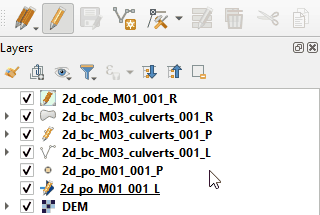
TUFLOW Syntax Rules
Control files use a double equal sign (==). When a single equal sign is used, the simulation stops with and error at the end of the .tlf file:
Typos in Control Files
Typos in control files are common, with the majority resulting in a 'does not exist' pop up message:
To fix the reference:
- The file that cannot by found is M02_01.tgc. Go to the folder where the file should be (in this example the TUFLOW\model folder).
- The file referenced should be M02_001.tgc.
- Update the reference in the TCF and confirm the file can now be found by right clicking on the file and selecting open.
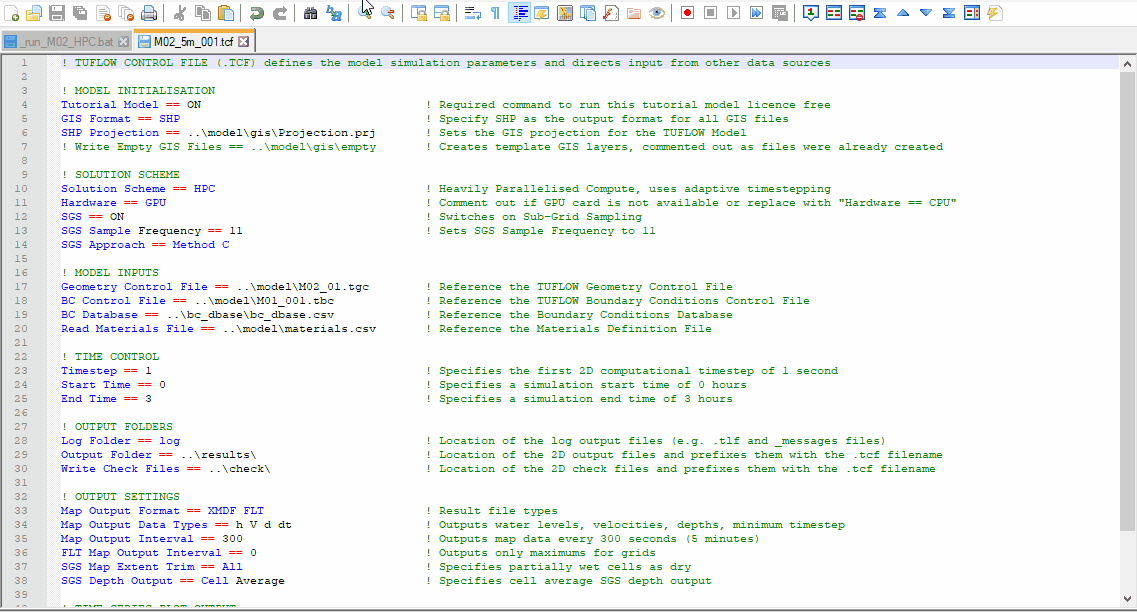
Typos in Input Layers
Typos in input layers are common, resulting in a 'does not exist' pop up message:
To fix the reference:
- The layer that cannot by found is 1d_nwk_M03_culverts_001_L.shp. Go to the folder where the file should be (in this example the TUFLOW\model\gis folder).
- The layer has a spelling mistake 'culvrts'.
- In QGIS use the 'Increment Selected Layer' tool to save the file with the correct name.
Note: The tool automatically increments a number if it is at the end of the file name.
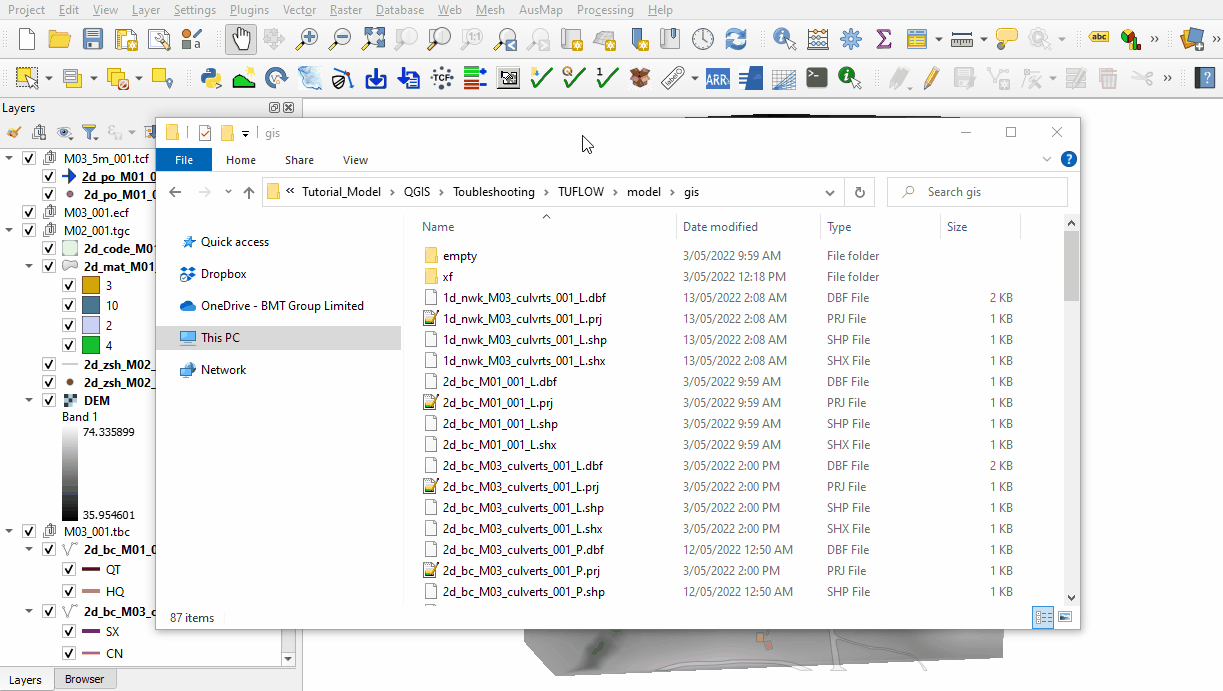
Troubleshooting Steps
DOS Window Flashes and Disappears
When a batch file has been clicked and a DOS window flashes up and disappears:
- Check the location of the TUFLOW executable. Right click on the .exe from the batch file and ensure that the executable can be found and open.
- Check the location of the TCF. Right click on the TCF from the batch file and ensure that the file can be found and open.
- If using environment variable 'set exe', confirm there are no spaces surrounding the equals sign (e.g. set exe="..\..\..\..\exe\2020-10-AD\TUFLOW_iSP_w64.exe").
- Check where the model and executable are located. We recommend to not use the C drive or an external hard drive.
- Batch files do not currently support UNC paths. The folder with the executable has to be opened with a mapped drive. Type "net use <drive>: \\server_name\share_name" in the command line to map desired drive.
- Write 'pause' at the end of the script. Re-run the batch file and the DOS window remains, giving some more information. In the below example, the file path to the TUFLOW exe is incorrect:

_ TUFLOW Simulations (*.log)
The log file contains brief overview of the simulation:
- Navigate to the TUFLOW\runs folder and open the _ TUFLOW Simulations.log in a text editor.
- Confirm if the simulation has 'Started' and 'Finished' line.
- If there is no log file, see here.
TUFLOW Log File (*.tlf)
The .tlf file contains information on the model run status and any error messages:
- Navigate to the TUFLOW\runs\log folder and open the .tlf file in a text editor.
- Scroll to the bottom to confirm the model run finished successfully by observing "Simulation FINISHED".
- If not, search from the bottom up for any error, warning or check messages.
- Review the error number, open the link provided in a web browser and read through the description and suggestions:
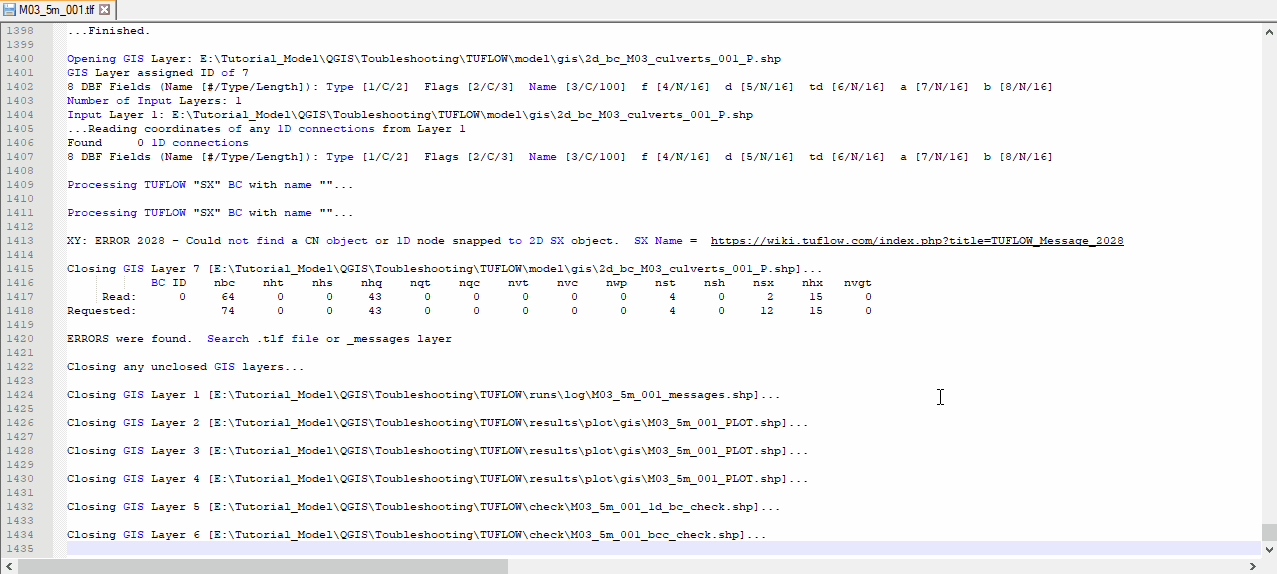
- Open the .qgs workspace in QGIS from the TUFLOW\runs\log folder.
- Click 'Apply TUFLOW Styles to All Layers'.
- Zoom in to the location of any error messages, turn on labelling to view the error.
- In this example the 2d_bc SX point isn't snapped to the 1d_nwk culvert.
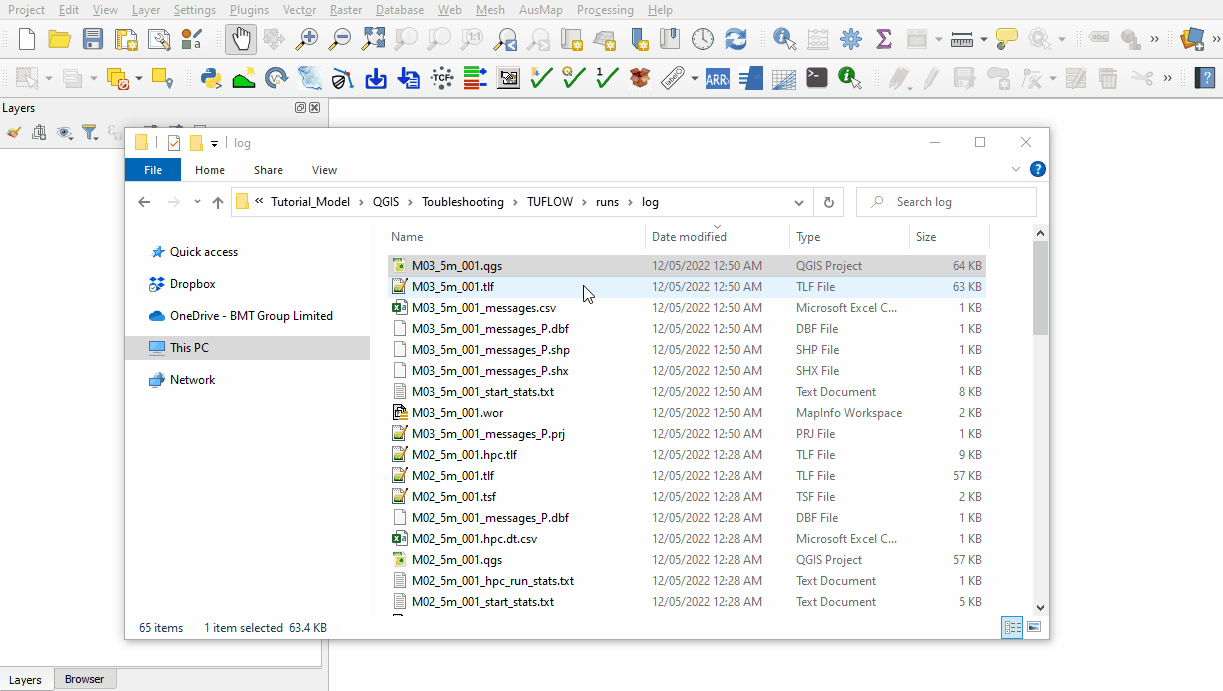
- If no error messages appear in the .tlf and the last line shows 'Sending initialisation data to HPC...' see HPC TUFLOW Log File below.
HPC TUFLOW Log File (*.hpc.tlf)
The .hpc.tlf file contains error messages not recorded in the .tlf file:
- Navigate to the TUFLOW\runs\log folder and open the .hpc.tlf file in a text editor. If the last lines shows:

- The model is set up to run on GPU and there is no GPU available, or
- The GPU needs a driver update, for more information see Update GPU Driver.
Conclusion
If the above tips do not assist in fixing the error, email support@tuflow.com.
| Up |
|---|

